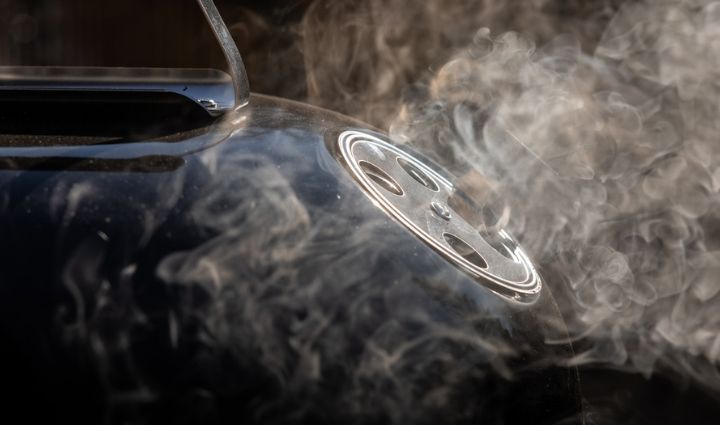
Three Key Elements of Temperature Control
To successfully regulate temperature in a smoker, you need to manage three crucial elements: airflow, fire temperature, and smoke consistency. Each plays a role in maintaining steady heat and achieving the perfect smoky flavor.
1. Airflow
Adjusting your smoker vents will increase or decrease airflow and your smoker temperature. Since every smoker reacts differently, finding the best vent positions for your setup takes some trial and error.
If you’re just starting with smoking and are wondering whether to keep your smoker vents open or closed, the general rule is that both vents should be at least partially open to allow proper airflow.
- Start with the top vent (exhaust damper) at least halfway open and the intake vent (bottom damper) about ¼ open. These settings may need to be adjusted based on your smoker and outdoor conditions.
- If you need more heat, open the bottom vent slightly to allow more oxygen. If your smoker is getting too hot, partially close the bottom vent to slow the fire.
2. Fire temperature
Keeping a steady temperature in your smoker starts with a well-managed fire.
Understanding how fuel burns and how air circulation affects heat levels will help you avoid extreme temperature fluctuations. So before you start planning long smokes with expensive cuts of meat, take some time to learn how much charcoal or wood you need to light to maintain a consistent, even temperature.
Keep these tips in mind for managing your fire temperature:
- If the temperature drops and your coals start to die out, open the intake vent slightly to increase airflow and reignite the fire.
- If your fire is burning too hot, restrict the airflow by closing the intake damper slightly.
If your smoker tends to run too hot, start with less charcoal (around ⅓-½ of a chimney) instead of piling on too much fuel at once. For extended cooks, add fuel gradually—don’t dump in 16 hours worth of charcoal at once or you’ll struggle to maintain the right heat level.
3. Smoke consistency
The quality of your smoke is just as important as managing your fire and airflow. Ideally, you want thin, blueish smoke—not thick white smoke, which can create a bitter taste.
Here are some tips for perfecting your smoke:
- Proper airflow plays a role in smoke consistency—too little oxygen can create thick, stale smoke, while proper ventilation ensures clean, flavorful smoke. If your smoke is too thick, open the dampers.
- If you’re using wood chunks, consider pre-burning them outside the firebox for a few minutes. Once the initial burst of white smoke dissipates, you can use long-handled tongs and heat-resistant gloves to safely add the wood chunks to your fire.






